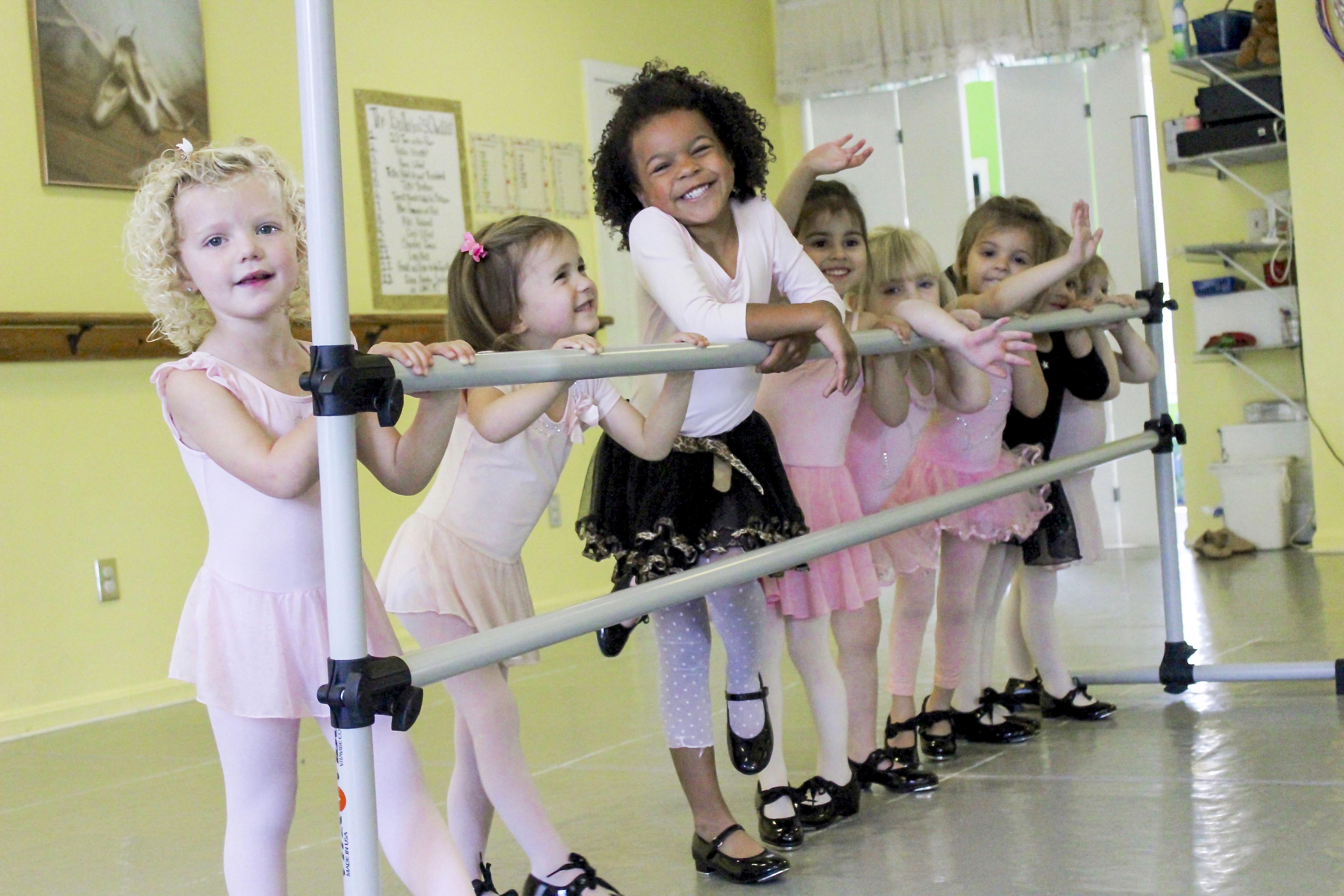If you missed it, please check out the first part of our “Getting Ready to Dance” series – “BEFORE the First Class”.
So you’ve packed the ballet slippers and extra elastics in the dance bag. The tutu is on and it’s finally time! It’s the FIRST Day of Dance Class!!!
Here’s what you, as a parent, can do to help make it extra special:
- Don’t forget your dance bag!
- Please be on time for class. Young children are particularly sensitive to entering when class has already started. They will have missed something, and they know it.
- Take your child to the bathroom before class. Please note that this is different from asking whether your child has to go to the bathroom before class. Make a trip to the bathroom part of your pre-dance-class ritual. (Once one dancer needs to be excused, suddenly every other dancer jumps on the “Potty Train”!)
- Let your instructor take care of the class in order to allow for uninterrupted creative time. For all dancers there is a time to perform and a time to be absorbed, learning about the body through the pleasure and freedom of movement for movement’s sake. Classes are closed to visitors, and parents are asked to wait outside the classroom so that dancers are free to take risks with movement, to focus in their feelings and to perform for themselves, not for others. Concentration, focus, and understanding come easier to students when the class can proceed without interruption. We make every class focused by closing out the outside world to make dance the center of attention.
- Try to maintain attendance. This promotes growth in skills, social interaction and commitment. A dancer’s attendance is vital – for themselves, their teacher, and their classmates.
A Note on Separation Anxiety…
Dance class may be the first time your child is separated from you. New places and people can be frightening at first. Until your child becomes comfortable in the class, he/she may take the first few classes to watch or participate minimally. Some children may take several weeks to settle in and fully engage. Though your child may feel safer with you in the room, remember that other children may be shy in your presence. It is best for you to wait outside the dance studio while class is in session and watch on our closed-circuit television.
If your child is feeling uncertain or refuses to participate, here are some things you can do to help:
- Come early to look quietly around the school and transition into the studio.
- No need to sneak away, even when there are tears. Your positive enthusiasm and confident goodbye are reassuring.
- Show your dancer where you will be waiting for him/her. And that you’ll be watching your dancer on the television!
- Set a time for hugs, smiles, and kisses before and after class.
- Encourage your child to teach YOU after taking class.
- Let your child tell you what will make class feel safer – a teddy to stand in for you, or a special outfit to make her feel stronger, for example.
As important as you are to the development and learning of your dancer, as he/she grows your child also benefits from this time apart from you. Your son or daughter gains confidence in his ability to make choices, learn new things, form ideas all on his own, and then proudly share them. As you witness these developments, enjoy! Watch as they learn to appreciate dancing with and without you. And value this dance of independence.
***STAY TUNED for the part three of our “Getting Ready to Dance” series – “Our promise to YOU!“
We look forward to meeting and working with you and your dancer very soon!
If you have any questions, please contact the studio office – (603) 436-2300
Thank you,
Miss Katie & DIDC Staff


